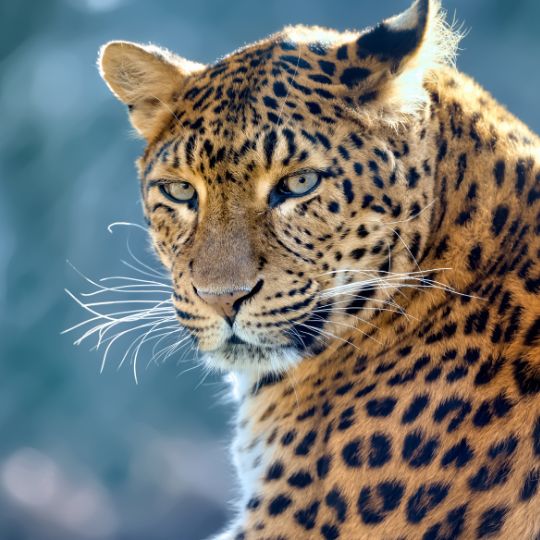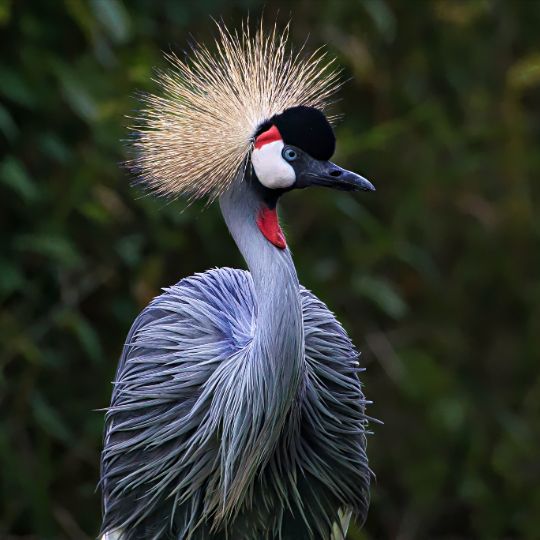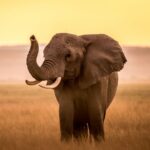The Maasai Mara National Reserve in Kenya is sure a lover of wildlife’s paradise. This stretch of savannah teems with life and one is likely to see lions, leopards, wildebeests, giraffes, and cows, among other animals.
Being home to almost 90 different mammal species and numerous bird species, Maasai Mara and the neighboring Great Mara ecosystem can be considered as one of the best places in the world in terms of wild species diversity.
In this article, let us take a look at those animal species you are most likely to come across whenever you go on a Maasai Mara safari.
The Big Five
Lions: Mara Masters

The Maasai Mara would not be complete without sighting the famous African lion popularly known by its scientific name Panthera Leo. Such big carnivores are mostly observed to be lying under trees in the afternoon or during the dawn and dusk.
Be sure to look out for pride of lions moving around slowly and especially around the kopjes (rocky hills) where they sit and scan for their prey.
The estimated lion population standing at 850-900 is found in the Masai Mara National Reserve and the surrounding wildlife conservancies making it one of the best regions in Kenya and East Africa to watch these beasts.
The lion which is a male can manage an area of the size of 30- 400 Km2 while a lioness is often charged with the responsibility of hunting.
Elephants: Gentle Giants

The wild animals that are well-known in Maasai Mara include the African elephants (Loxodonta Africana). These intelligent animals live in social groups of females and their offspring called family herds which are commanded by a dominant female.
Behold as they wave their trunks fiercely to call out, search for their meals, and cool off in rivers or ponds.
Elephants are the largest living terrestrial animals and adults can attain a mass of up to 6 tons and length of up to 7.5m and a height of up to 3.3m at the shoulder. Their social structure and behavior La make them one of Africa’s most appealing animals.
Cape Buffalo: This is the Black Death.
Looks can be deceiving because Cape buffaloes are among the most dangerous large animals to meet in the African continent. These gigantic animals that are plant eaters move in large groups and are usually rated as having a dangerous disposition. Sighting a herd of buffalo feeding on the natural grasslands is quite dramatic.
It is commonly referred to as the ‘Black Death’ African buffaloes have not been tamed for domestic use because of their explosive temperance. A herd can consist of a hundred or more cows during the dry season. Males and females both have characteristic curved hindquarters which swell and nearly touch over the head.
Leopards: Elusive Predators

Leopards (Panthera pardus) are not as often spotted as lions but are found in the Maasai Mara. These cats are quite easy to recognize because they have spots but they are rather elusive and prefer to stay in trees during the day. There are chances for the lucky visitors to witness a leopard taking its catch up a tree to keep it secure.
Leopards are private creatures who prefer to hunt at night and always hunt independently. Challenges like loss of human habitats and human interference have however not so much affected the Maasai Mara and some other parks in Kenya where leopards are in adequate numbers.
Rhinoceros: Endangered Icons

The black and white rhinos are also found in Maasai Mara albeit more scarce when compared to the other big five animals. It is exciting to watch these prehistoric-looking animals more so that they are now classified as endangered species.
The black rhinos are actually smaller than the white rhinos, but they are also more aggressive compared to the latter. Both sexes employ the horns for defense against predators, in combat with rival males, and during the period of breeding. Black rhinos are known to favor habitats containing thickets and can be seen using their lip that curls backward to feed on vegetation.
Abundant Herbivores
Wildebeest: Hailed as important contributors during the Great Migration

The giants of the savannah and the most famous inhabitants of the Maasai Mara are undoubtedly the wildebeest. These rather funny-looking antelopes are top of the pack in the Great Migration where about 1.5 million wildebeest, 400 thousand zebras, and 200 thousand other antelopes migrate from the Serengeti to the Maasai Mara and back in search of fresh pastures.
Zebras: Nature’s Monochrome Masterpiece

The Maasai Mara is home to zebras, which are easily conspicuous because of the design of their body. Some of its features include the black and white patterns on the feline’s body which acts as a natural disguise and control of the body temperature.
You will find it browsing in the same grasslands as wildebeest and other large bovids.
The Plains Zebra is the sub-species sighted in the Masai Mara. These animals are capable of achieving speeds of between 50 to 60 Kilometers per hour and are noted for elegance in their movements.
Giraffes: Towering Browsers

The giraffes (Giraffa) with their very long necks and legs moving around the plains of Mara are not difficult to spot. These massive creatures mainly feed on the leaves of acacia trees and can be easily spotted in small groups or coupled. Just seeing a giraffe adjust its long legs to get around the savannah is something to marvel at.
The Maasai Giraffe as distinct from other subspecies is predominant in areas of southern Kenya like the Masai Mara. Currently it is estimated that the number of Maasai giraffes is about 33,000 in the Kenyan wildlife wilderness.
Gazelles: Swift and Elegant

I discovered that both Thomson’s and Grant’s gazelles are prevalent in Maasai Mara. These are elegant animals that are fast runners, and this makes them escape easily from the various predators. They are easily spotted by the white color of their rumps as they jump upon the grasslands.
Probably one of the unique features that define Grant’s gazelles is their color and the horn length. Their back is a disturbing sandy brown while the flanks, belly, tail, and rear legs are white. They both have horns and share similar abodes in mixed herds with other bovines.
Hippos: River Giants

Although you might not see them during your game drive, hippos (Hippopotamus amphibius) are prevalent in the Mara River and other water courses. These enormous animals live most of the time in the water to avoid overheating and come on the land during the night for feeding. An adult male can even weigh about 1500 kilos, thus making it one of the three largest land mammals on the planet.
Cheetahs: Speed Demons
Maasai Mara is also home to the world’s fastest land animal, the cheetah (Acinonyx Jubantus), although the population of this feline is not as abundant as that of lions or leopards.
Solitarily inhabiting the open country, cheetahs use their speed when chasing their prey, accelerating to the speeds of up to 110 kph for brief periods.
Aardvark: Nocturnal Diggers
The African aardvark (Orycteropus afer) is a small to medium-sized mammal that feeds on ants and termites and is characterized by an elongated snout and powerful claws for digging.
These are primarily nocturnal animals that mainly diet on insects especially organisms such as termites and ants. They have great claws that enable them to dig into the ground and create burrows.
Common Eland: Impressive Antelopes
Common eland (Taurotragus oryx) belongs to the antelope family and is the second largest antelope found on earth.
These magnificent beasts choose to live in rough savannah rather than plain areas and are often observed feeding in the early morning, late evening, or during the night with a full moon.
Birds of the Mara

Contrary to what most people think that Maasai Mara is home to only mammals, it is a bird lover’s destination. Some common bird species you might encounter include:
- Ostriches: Everyone wants to see, the largest bird of the world in open planes.
- Secretary birds: These large birds have very long legs and have a unique crest on their heads.
- Lilac-breasted rollers: Due to the beautiful colors on their bodies, these birds do brighten the surroundings.
- Vultures: Several vulture species are also part of the Mara ecosystem since they perform the responsibility of ‘ cleaning up ’ the surroundings.
The Maasai Mara is home to a vast array of animals, which puts it among the finest destinations for game viewing. If you want to see the Big Five or the wildebeest migration or simply get a firsthand taste of Africa’s wildlife spectacle then the Maasai Mara is the place to be. Come and visit today, and be ready to embark on an exciting ride through the beauty of Kenya’s wildlife.





